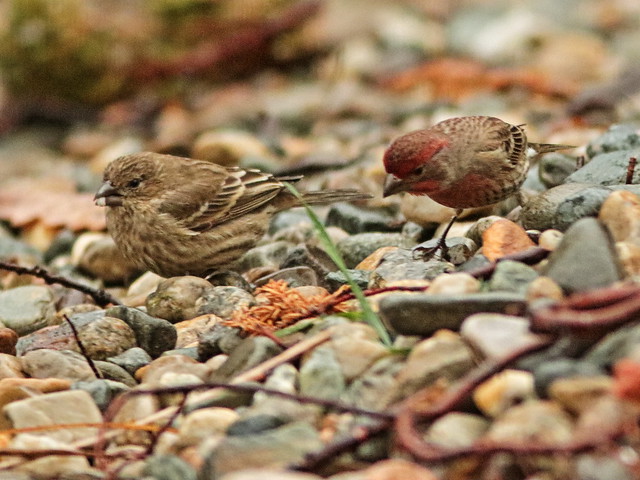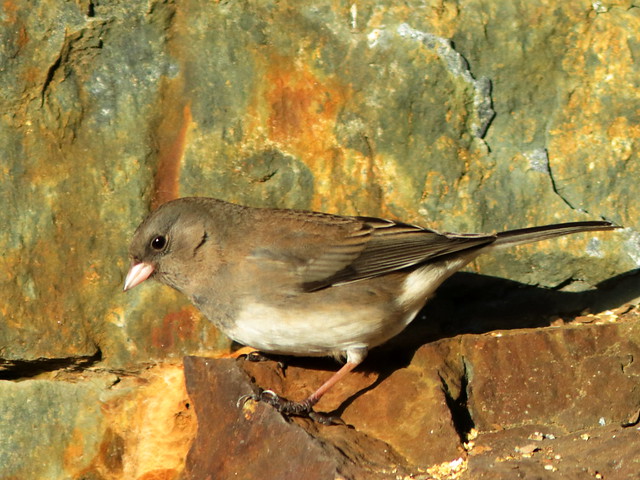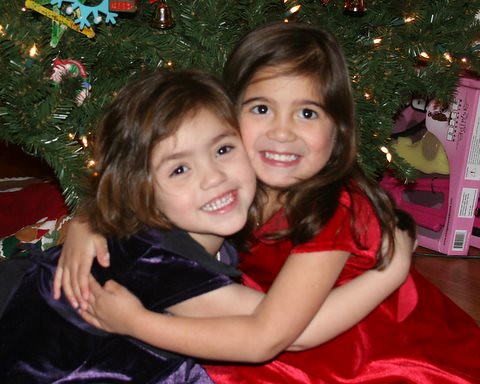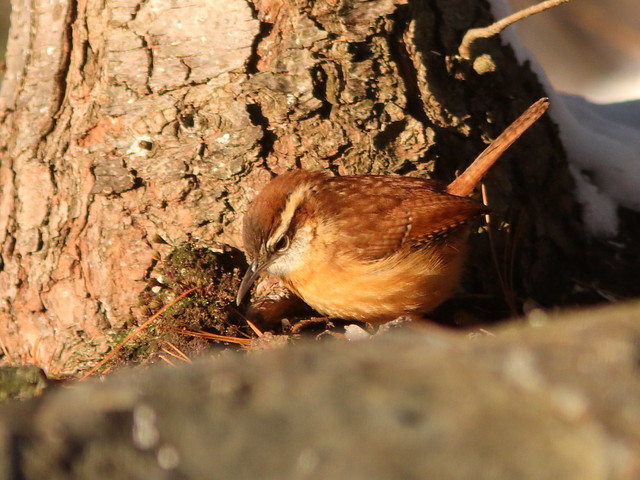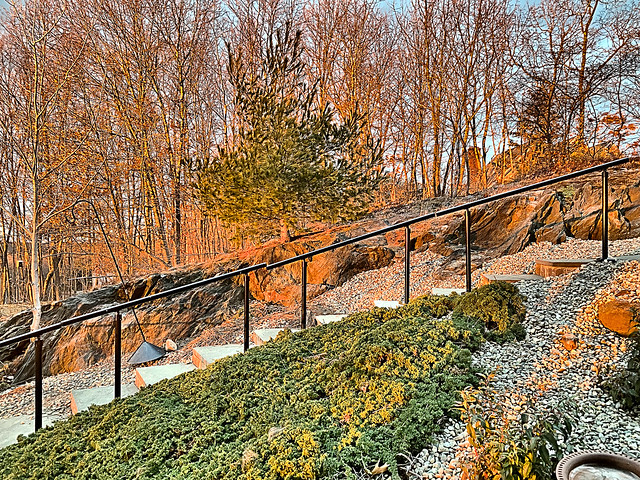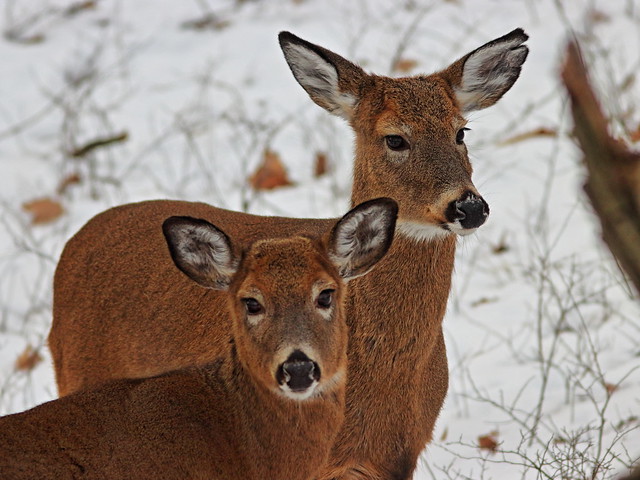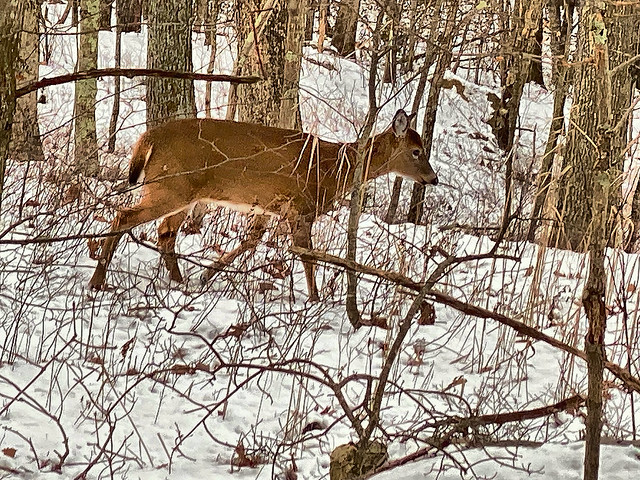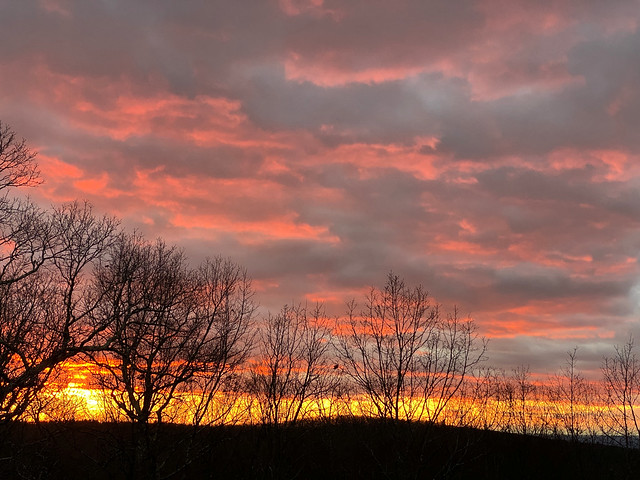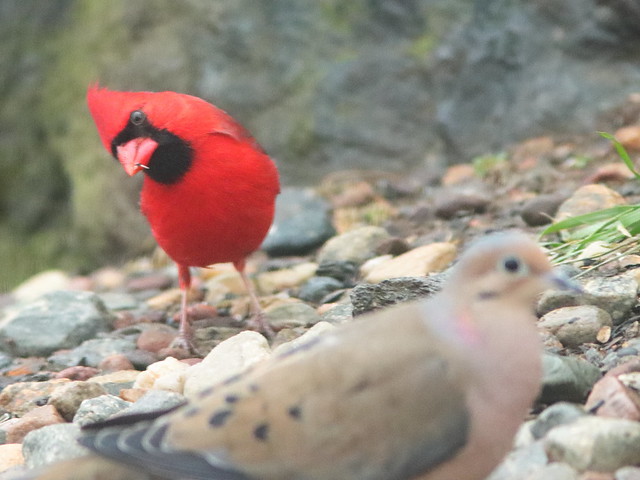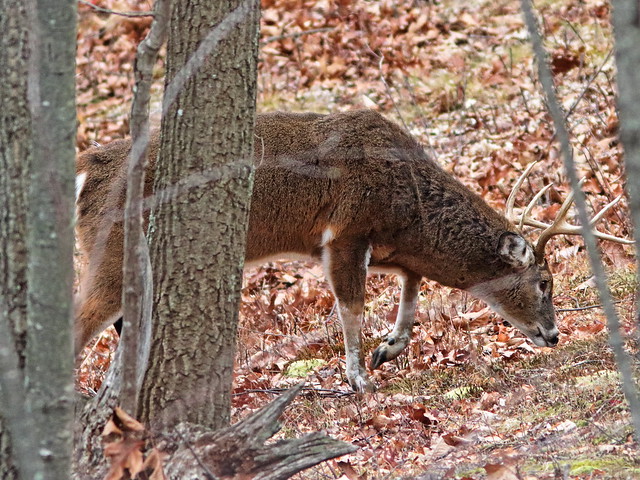This past week we, with much of the Midwest and Northeast US as well as Canada, endured the passage of a severe weather system which produced a "bomb cyclone," a hurricane-like storm caused by the sudden collision of a tropical air mass with an arctic cold front. Hot air rapidly rises and creates an area of very low pressure encircled by high winds and intense precipitation. In low light before the storm struck I obtained a few poor photos of feeder birds.
Mourning Dove and Northern Cardinal feasting on safflower seeds
A couple of views of White-throated Sparrows, which have been strangely scarce so far:
House Finches:
White-throated Sparrow:
Black-capped Chickadee:
Tufted Titmouse in snow:
Christmas morning was clear but still very cold (10°F/-12°C). Temperatures remained below freezing the rest of the week, but winds were relatively calm and the sun shone brightly. Shooting through the window glass, the sun helped sharpen my photos.
A male Dark-eyes (Slate-colored) Junco posed atop the granite ledge:
Late afternoon sun displayed the brown plumage of a female Junco and brought out the colors and patterns of the granite
A White-breasted Nuthatch perched nearby...
..and headfirst, descended the wall:
...and my first date with MaryLou, 69 years ago on December 27, 1953, a Dinner Dance at The Meadowbrook in New Jersey. (Not much came of it as we did not start going steady until well over a year later). Betty and Tom, respectively classmates of MaryLou and me, occupied the middle seats at the table. My dear sister Ellen "fixed me up" with MaryLou, whose brother Larry was seated on the left. He was my classmate in High School and College-- Ellen was his date. We all were fast friends. Sadly, of the six in our party, we two are the only survivors.
We did not participate in late evening extended family gatherings, as respiratory diseases are running rampant. We have been sheltering in our Casita and masking up even when interacting with the immediate family. I do not want illness to interfere with upcoming CT and MRI examinations which will gauge my progress and help plot a future course for chemotherapy, now as I conclude my 10th 3-week treatment cycle (two weeks on, one week off).
= = = = = = = = = = = = = = = =
My Corner of the World
________________________________________________
Please visit the links to all these posts to see some excellent photos on display
________________________________________________



